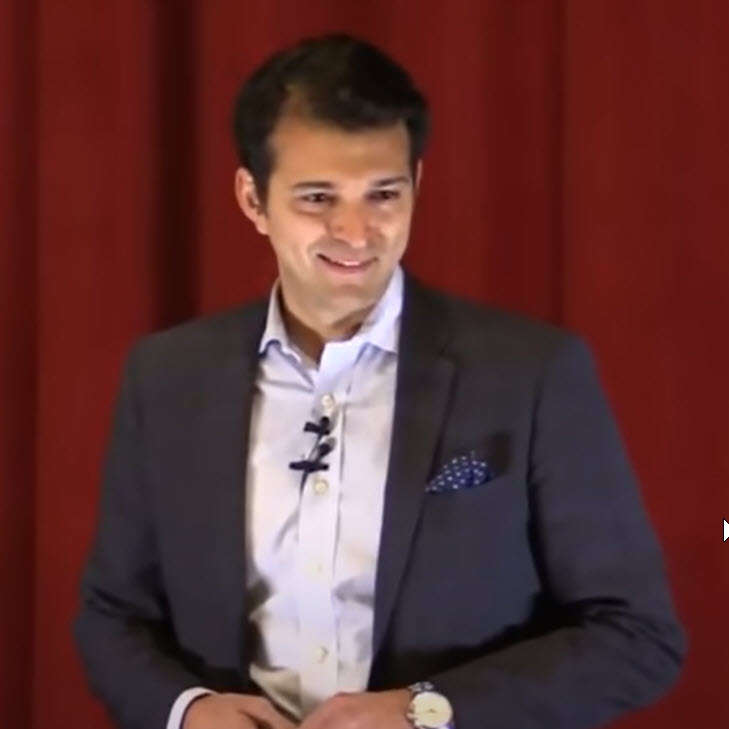Progressive Learning Session 4 (Create a Filtered List).
This episode introduces the concept of creating a filtered list of candidates on LinkedIn, reaching out to those you select from this filtered list and sending them an invitation to meet with you face-to-face on Zoom.
However, before reaching out to others, it is important to recognise several vital points:
Most of us believe that if we have been “cold contacted”, it’s because the person attempting to contact us wants to sell us something or wants something from us. You are no different, and it’s why most people are wary of ‘the catch’!
We believe there is usually more value in making a great connection than making an immediate transaction.
But why would a stranger want to do this?
What’s in it for them?
Simply because they realise the value of developing a strong relationship with someone who has connections to many other great people!
2. Although you are not directly looking for customers on LinkedIn, like-minded others you meet on LinkedIn will most likely be interested in what you do and be thinking of people they could introduce you to.
3. If you set up your LinkedIn profile well, construct effectively filtered lists of candidates and construct good outbound messages on LinkedIn, it is unlikely that those you reach out to will be sceptical that your motive for reaching out to them is to try and sell them something.
Consistency is the primary key to success. We know it takes about 200 connection requests to find 5 people who will join your team.
If you spent 20-30 minutes a day examining 20 profiles and sent 4 connection requests a day, it would take you approximately 2 and a half months to build a team of 5.
With 10 minutes of consistent effort a day it would still only take about 5 months to develop a team of 5 network builders.
If you already have at least 500 connections on LinkedIn, we suggest a great place to start is with those who have already connected with you. In other words, your first-level connections.
Soon you will learn about the My Most Trusted chrome browser extension. This is a fantastic tool to assist you to make and manage LinkedIn Connections. When you install this extension, it comes prefigured with a default message that you can use to send out to first-level LinkedIn connections.
The default message is as follows:
“Hi, First Name,
We’ve been connected on LinkedIn for a while. As I was reviewing your profile recently, I realised I have several close associates in my network who could also be good connections for you if you are like-minded.
I’m looking to build a community of like-minded professionals so that we can all advocate for each other.
My experience is that advocating for like-minded others is by far the most effective use of our time in producing tangible results.
It’s not about pitches, sales, offers or deals. For me, it’s definitely not about immediate transactions. It really is about building genuine pro-actively advocating relationships.
We all know how much business has been impacted by the events of the last few years. However, these events have made us realise that we all do better by working together.
My motto is; build trust by giving first.
If this resonates with you, click the following link and book a time for a quick Zoom to explore how we may be able to help one another.
There’s no point in just being connected on LinkedIn - let’s take it further.
I’m looking forward to getting to know you better and seeing how I may best help.
Cheers
Fred”
This is just an example to give you an idea of the type of message you could convey to set up a Zoom with your 1st Level LinkedIn connections. It’s a starting point for you to personalise and improve upon.
Sometimes you will discover great people on LinkedIn simply by interacting on your LinkedIn feed.
For example, you may find great people by reading their posts and commenting on them.
The other thing you can do that may be more effective and efficient is to search for specific attributes on LinkedIn profiles using the Boolean terms
You can then capture the search results and further examine the list to see who you want to send a connection request to.
You can then consistently send such people a connection request.
Predictably this process will find you a few great network-building partners in a relatively short time. The beauty of this approach is that others can easily duplicate it so that your team can rapidly grow.
This means you can create momentum and excitement, and results through advocacy.
As a first step, filter your first-level connections to find ones that have words on their profile that indicate that they may be like-minded. The next step would be to examine that filtered list and only send the above message to those who have words and phrases on their profile that really resonate with you.
After you have invited your first-level connections to have a Zoom with you, it’s time to create relevant filtered lists of your second-level connections. Your second-level connections are the first level connections of your first-level connections.
Let’s say you have 500 first-level connections, and they each also have 500 connections. In that case, you would have 250,000 2nd-level connections through your first-level connections.
From 250,000 connections with careful filtering, you should be able to find at least 5 that see the value of building relationship-based networks as part of your team.
LinkedIn limits the length of the message that you can send your second-level connections to 300 characters. So, you need to think carefully about your connection request message.
Our “My Most Trusted” default connection request message is.
“Hi, First Name,
It looks like you have a great deal to offer that may be of interest to some of my contacts. Hopefully (like me), you also value stronger connections outside LinkedIn. If so, let’s connect to meet on Zoom or equivalent.
Cheers
Fred”
Typically, you will vary the first sentence in the invitation to personalise it as much as possible to reflect words or phrases on their profile.
For example, for a particular profile, when you come to send the message, you could override your standard default first sentence with something like, “it’s great to see that we both believe in making a difference in partnership with others.”
Regarding the messages you send.
When you send a message to someone on LinkedIn suggesting that you meet face-to-face on Zoom, what is the first thing they are likely to do?
That’s right! If they read your message and are curious about whether or not they should meet you on Zoom, they are most likely to look at your LinkedIn profile.
One of the first places they will typically look is the “About” section on your LinkedIn profile.
Therefore, leaving aside re-writing your entire LinkedIn profile, we suggest you add the following small paragraph to the top of your; “About”; section.
“Although we may not be able to do business together, it is highly likely that I will know people that could be great contacts for you. I enjoy connecting like-minded others for their mutual benefit.”
Over time, you can improve the look and feel of your profile. In the Progressive Learning mind map, you can see some great examples of appealing LinkedIn profiles.
When it comes to making a filtered list of suitable candidates that you’d like to partner with, what words come to mind?
On the other hand, what words, would you use to exclude profiles that you are not so interested in?
LinkedIn allows you to use the following boolean operators in your searches.
Learning how to use these 3 operators is really very simple and can save you a lot of time examining many unsuitable profiles.
Many people have trouble distinguishing between the boolean
You can quickly understand the difference by starting with the search term.
Tall OR Dark OR Handsome.
This search would cause LinkedIn to show all profiles with any of the words; Tall, Dark, Handsome on them.
Compare this with a search containing the same words separated by the boolean
So the search would be.
Tall AND Dark AND Handsome.
This search would only show profiles that have all 3 of these words. So, it would be a much shorter list than when these words are separated by the boolean OR.
Boolean searches can be quite complex and can contain brackets. As such, you really need to see such searches visually rather than just listening to a podcast like this.
The best way of doing this is to check out the relevant sections in Session 4 of the Progressive Learning mind map.

This animation is about the process of making small, repetitive, consistent actions, over and over, until you suddenly find you have created something you...

Progressive Learning Session 3 (Start Building Your Team - Part B) After a Discovery call, if your candidate is keen to experience a CC...

You cannot solve today's time management problems with yesterday's time management. What we've noticed is the emergence of a new type of thinker. Somebody...